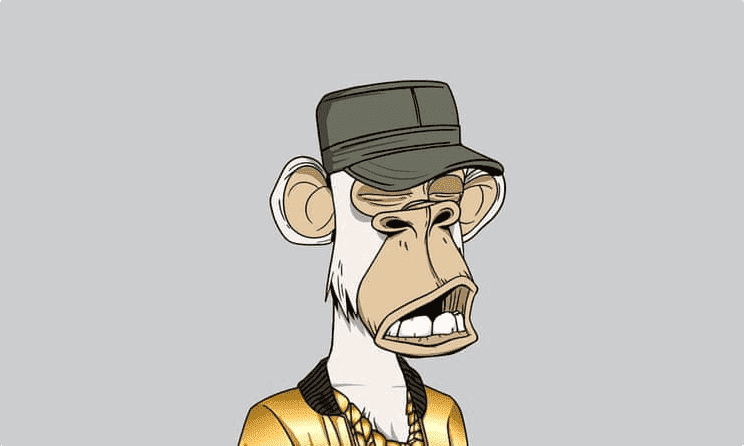A plague of apes has spread across social media. Wherever you look, blank simian faces stare back at you. Their features? Sickening. Their prices? Equally so.
The apes have brought in more than $1 billion (£750 million) in sales. Eminem, Mark Cuban and Shaquille O’Neal are just some of the famous names who own an ape. Where have they come from? What do they mean? How can we get rid of them?
The Bored Ape Yacht Club sells NFTs. In essence, an NFT — which stands for ‘non-fungible token’ — is a unique piece of data stored on a blockchain, a digital ledger, which can be associated with a work of art, or music, or literature. Bored Ape NFTs are associated with images of, well, bored apes.
Even in a time where definitions of ‘art’ have been watered down to the point that Jeff Koons is called an ‘artist’ rather than a ‘hack fraud’, Bored Apes are not art.
If they are art then so is the chewing gum I just dodged in the street. Each ape looks as unsightly and gormless as the next, gazing off into the distance without charm, or wit, or any more poetic gravitas than that which is possessed by a drunk middle manager cooking up a really satisfying belch. They have minor differences in style but the same deep existential vacuity.
To be fair, no one is buying the apes for the apes. What is important is less the image, which anyone can copy, but what it represents. Owning an ape earns one access to a private club, with an online forum and real life events. Solely by the virtue of the scarcity of these insufferable simians, it is an exclusive one.
Let’s face it, art is inextricable from status games. People do not only buy original paintings because they like them, or because they like art, but because they want to impress. So, someone paid $1.4 million (£1 million) for a reproduction of a Banksy painting which immediately self-destructed. Was the painting worth $1.4 million to them in itself? No. But it is was worth being the kind of person who owned the painting.
People are not only interested in projecting wealth. They are interested in projecting sophistication and pursuing trends. Becoming a member of the Bored Ape Yacht Club, as well as offering the chance to network with other rich, extremely online people, is supposed to mark you out as being on the cutting edge of business and culture.
There is no point in lamenting the fact that human beings seek status. One might as well lament the fact that humans feel aggression and like to eat doughnuts. What is important is how this need for status is channelled. What values must be realised to achieve it?
Some have started arguing that Bored Apes, or at least the people behind them, are connected to racism. Apes of course have often been used in racist imagery to depict black people. Online people have started talking with not altogether convincing authority about ‘simianisation’.
Yet the evidence is thin, compiled by wild-eyed types who think vague correlations represent clinching proofs. The organisation behind the apes is called ‘Yuga Labs’ and the ‘Kali Yuga’, originally a Hindu term denoting the most violent of our four world ages, which is used by some far-right commentators as a reference to civilisational decline.
According to its founders, though, it is actually a reference to a character in The Legend of Zelda who turns people into 2D paintings. Further evidence includes the fact that several people at Bored Apes meet-ups have worn Hawaiian shirts and that members of the anti-government subculture ‘the boogaloo boys’ also wear Hawaiian shirts. Should people have stopped wearing leather after world war two?
Charges of racism can be bad for business, even if they are unfounded. I hope that it is not this sort of character assassination that lowers the status of Bored Apes. On the other hand, I hope their status will be lowered by the renewed knowledge that it is not merely novelty and exclusivity that matter when it comes to art and media but beauty and insight.
NFTs, for all their limitations, can be used to support the development of valuable art and media. But the content should have value — not just the code.
Got something to add? Join the discussion and comment below.
Get 10 issues for just $10
Subscribe to The Spectator Australia today for the next 10 magazine issues, plus full online access, for just $10.



















Comments
Don't miss out
Join the conversation with other Spectator Australia readers. Subscribe to leave a comment.
SUBSCRIBEAlready a subscriber? Log in